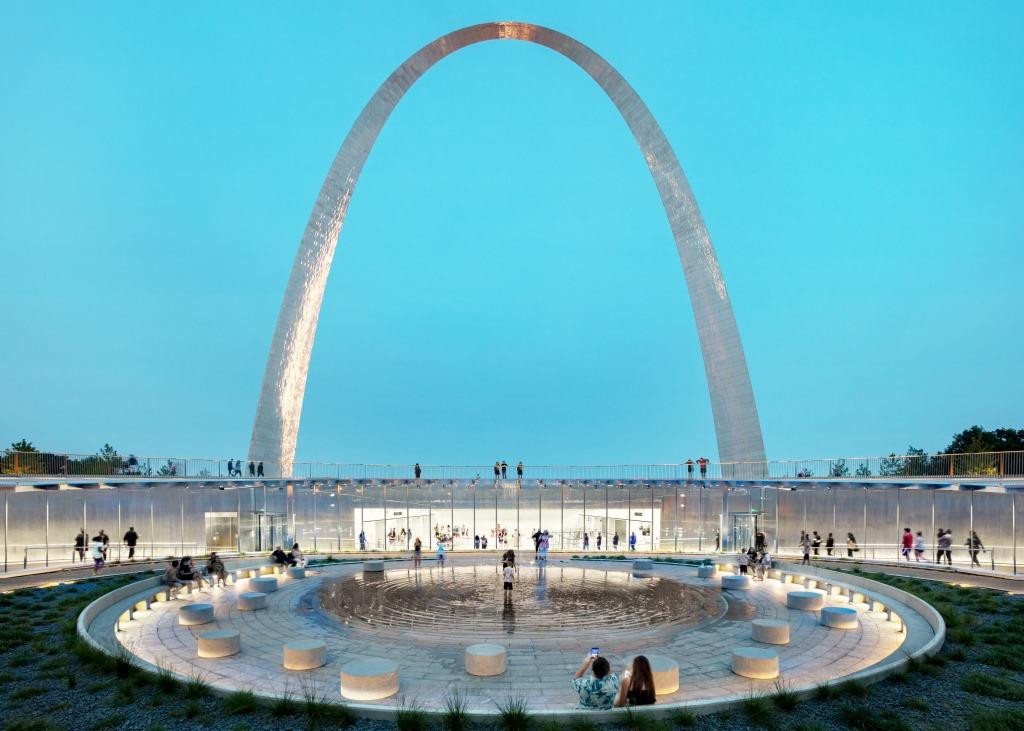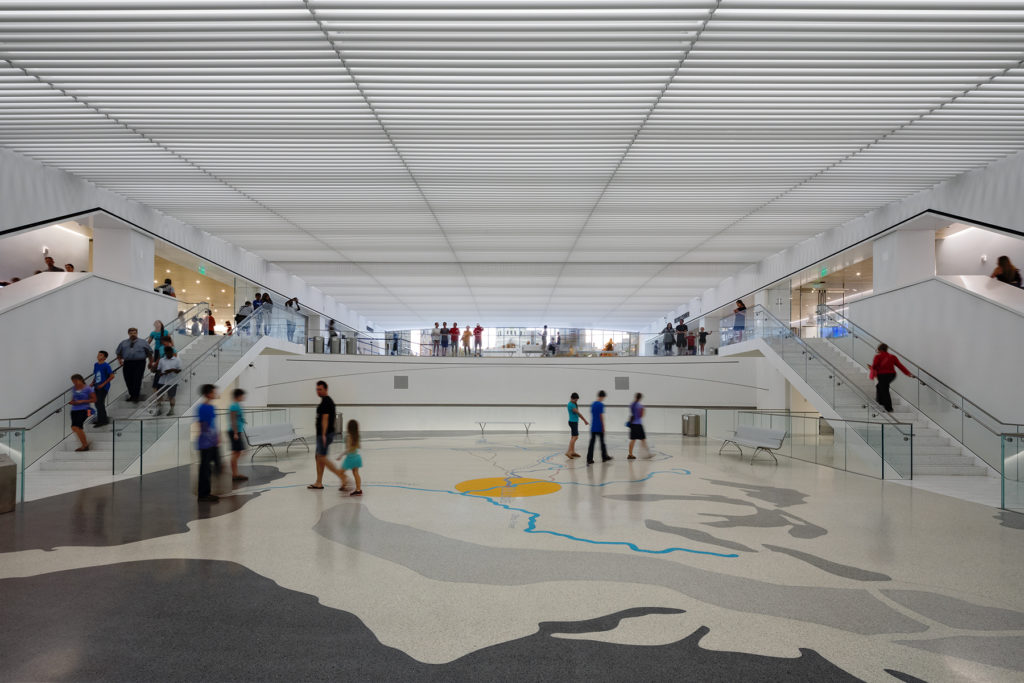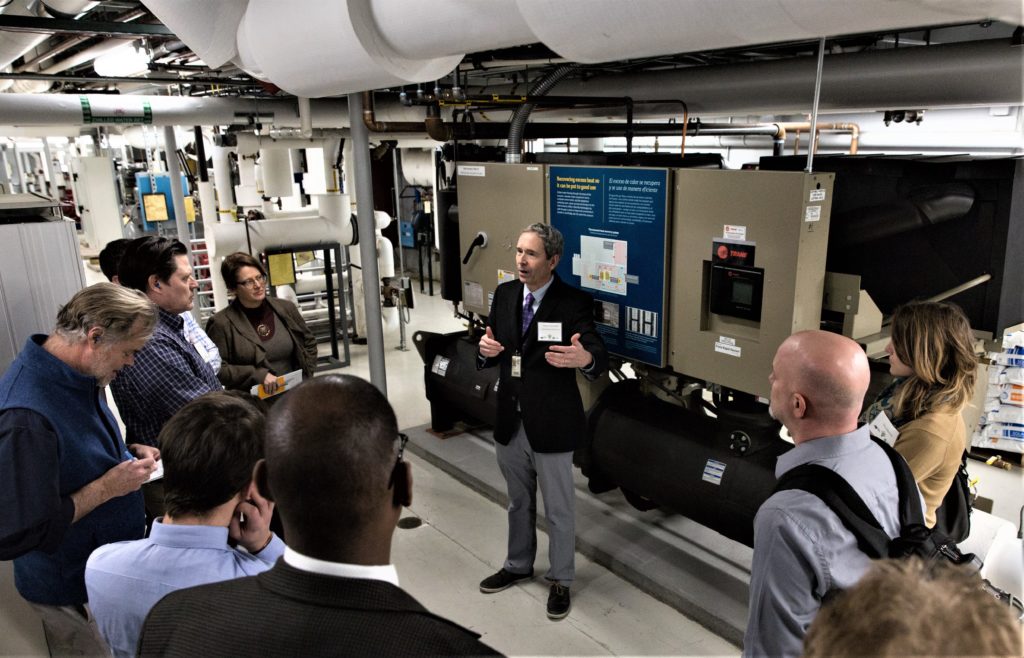By Joyce Lee and Patrick Hamilton
This year’s 50th anniversary of Earth Day on April 22 arrives in the midst of the coronavirus pandemic. Addressing this global crisis understandably is everyone’s immediate concern. The months it will take before this contagion runs its course may seem interminable while in the midst of them but they are finite in duration. Burning fossil fuels and clearing forests and in so doing releasing huge amounts of carbon dioxide into the atmosphere will have consequences that are forever irreversible. So we find ourselves living in a time when we must take on two vital tasks simultaneously – battling the acute trauma of Covid-19 while addressing the chronic crisis of climate change. Museums have important roles to play long term in sustainability messaging. Let’s take a look at the green museum community being formed around the world.
Some countries have initiated dialogues with their cultural institutions. For example, Julie’s Bicycle, with the support of Arts Council England, has been tracking the carbon footprint and use of clean energy in many United Kingdom museums. A portfolio approach to tracking history, science, and art museums is a promising start.
Leadership for Energy and Environmental Design (LEED) is an international building standard measuring achievement in multiple environmental categories. There are LEED buildings in over 165 countries. As seen in this LEED database, about 150 museums have earned LEED green building certification. Approximately 300 more have registered to go green. This is quite a feat for a complex building type. Are you on the list?
On Twitter, @MuseumsforParis highlights leading museums’ accomplishments in sustainability, from enhancing their own building environment to upgrading their in-house education programs and exhibits. This global momentum is encouraging.
In North America, almost 150 museums have voluntarily put their energy consumption into Energy Star Portfolio Manager, a platform that can generate a carbon footprint calculation. Energy benchmarking fulfills the pledge of those museums committed to We Are Still In while demonstrating they are “talking the talk and walking the walk.”
Museums remain one of the public’s most trusted sources of information. They are also well-situated to engage the public in discussions because as museum consultant Elaine Gurian noted, “Museums remain not contested spaces, but safe spaces for unsafe ideas.”
And the buildings themselves that museums occupy are prime candidates for raising the topic of climate change because the heating, cooling, and powering of buildings is responsible for 40 percent of all energy consumption in the U.S. and consequently a large share of the nation’s carbon emissions. In some urban areas, building emissions can be as high as 70% of all emissions.
The design and construction of new museums followed by their ongoing energy benchmarking are opportunities for institutions to convey an enduring commitment to addressing climate change by embedding energy efficiency, renewable energy, and green infrastructure into the very structures and operations of their institutions.
Gateway Arch Museum

Highlighting the use of sustainable materials and energy-saving features, the recently renovated and expanded LEED Gold Visitor Center and Museum at the Gateway Arch in St. Louis is currently one of only eleven LEED-certified National Park Service sites. The updated and expanded 145,000-square-foot building is tucked almost entirely underground and is topped with a 3.1-acre green roof designed to maximize park space and provide improved visitor amenities without drawing attention away from Eero Saarinen’s iconic arch. By tucking the building underground beneath a vegetated roof, the architects not only preserved unobstructed sight lines to the Arch, but also helped reduce the urban heat island effect and maximized the amount of open space. In addition to its green roof, the building incorporated further design components such as LED lighting, high-efficiency HVAC systems that result in substantial energy savings.

“St. Louis’ cultural institutions have been leading the way on green building and energy efficiency for many years. By investing in sustainable operations and performing ongoing benchmarking, our cultural institutions can evaluate the potential for operational savings during good times – and the more tumultuous times we are experiencing now. We look to our cultural institutions to bring us joy and connect us to the natural world, art, history, and culture – we also look to them to lead the way in how we can better care for our planet.” Says Emily Andrews, Executive Director, USGBC-Missouri Gateway Chapter
And museums indeed need not and should not wait for new building projects to up their game on climate change and sustainability. Many of the buildings standing in 2050 – the year by which climate scientists state the world needs to be carbon neutral to avoid the worst impacts of climate change – already exist today. Many museums occupy buildings that were originally designed and constructed for other purposes and at times when neither energy efficiency nor climate change were pressing concerns. Their energy demands consequently often are extravagant and costly.
Science Museum of Minnesota
This museum in St. Paul actually occupies a building designed and constructed in the late 1990s explicitly for its use it but it was nonetheless startled to learn during a comprehensive energy analysis in 2010 that standard procedure was (and still is) to design, construct and operate large buildings that treat the large amounts of heat generated internally as waste and reject it from buildings while simultaneously spending a large amount of money to purchase energy with which to do work that could have been performed with the waste heat being thrown away. Armed with this new insight, the Science Museum embarked in 2014 on an advanced heat recovery retrofit of its facility that has reduced annual energy expenditures by $300,000 with a three-year payback and cut the museum’s carbon dioxide pollution by 1,800 metric tons a year. Propelled by this success, the Science Museum has continued its commitment to energy efficiency with the result that its electricity use has declined for the past nine years in a row.

While every building is unique, it is highly likely that your facility is consuming far more energy than is necessary and that grappling with that reality ultimately would be beneficial to your institution’s bottom line while providing an illustration of what is possible to your community.
So how to begin? You can’t manage what you don’t measure. Designate someone to track your institution’s monthly utility bills, and then share out those data with museum staff and many others beyond your walls. Be an exemplar of candidness. The more open you are about your energy use and desire to improve your performance, the more likely outside entities are to offer assistance in making facility improvements because your eventual success will reflect well on them as well.
Centuries-old cultural institutions can last well into the future. Longevity in museums can translate to a higher cumulative carbon footprint, so, considering that museums have a very long service life, “Design, Build, Operate Green” seems to be more important now than ever before. Benchmarking in existing museums and tracking performance is an imperative. In new construction, the greenest design strategies could be embraced: minimizing environmental impact while inspiring the community to think of the future as waste-, energy- and water-positive.
Photo credits:
- Behind-the-scenes energy tour of the Science Museum’s advanced heat recovery system. Image courtesy of Science Museum of Minnesota.
- Gateway Arch Museum. Image courtesy Gateway Arch Park Foundation
About the authors:
Joyce Lee, FAIA, LEED Fellow, is president of IndigoJLD providing green health, design, benchmarking and planning services on exemplary projects. Joyce served under Mayors Giuliani and Bloomberg as Chief Architect at the New York City OMB. Her work has received numerous awards, such as those from the American Institute of Architects, US EPA, and the Robert Wood Johnson Foundation. Contact: Info@IndigoJLD.com @museumsforparis
Patrick Hamilton is on temporary furlough from the Science Museum of Minnesota where he serves as the Director of Global Change Initiatives. He also serves on the Leaders Circle of We Are Still In – a coalition of cities, states, tribes, businesses, universities, healthcare organizations, cultural organizations and faith groups that represent a constituency of more than half of all Americans and $6.2 trillion in economic activity that strongly opposes the US withdrawal from Paris and is committed to climate action. Contact: patleehamilton@gmail.com @patrickhamilto2
